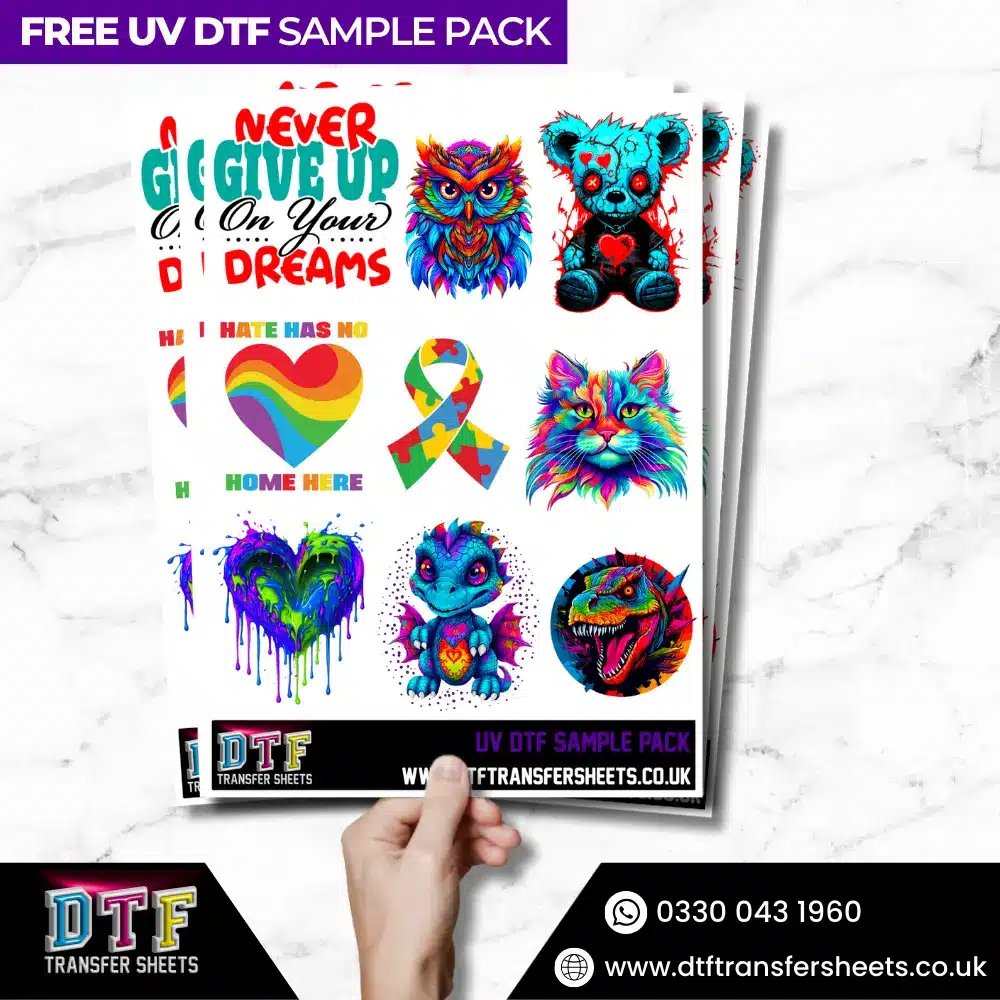Direct to Film (DTF) printing is a cutting-edge fabric printing method that has been gaining popularity in the textile industry due to its versatility and efficiency. This technique involves printing graphics onto special films, which are then transferred onto various fabrics. DTF printing stands out for its ability to adhere to a wide range of textiles, including cotton, polyester, and blends, making it a versatile choice for clothing manufacturers and custom apparel businesses.
How DTF Printing Works
DTF printing follows a relatively straightforward process:
- Design Preparation: The desired graphic is created or modified using graphic design software to ensure it is suitable for printing.
- Printing: The design is printed in reverse on a clear PET film using special DTF inks.
- Powder Application: After printing, a powder adhesive is applied to the printed film. This adhesive is crucial as it facilitates the transfer of the ink from the film to the fabric.
- Curing: The film goes through a curing process, where the adhesive is melted and the ink is dried, preparing it for transfer.
- Transfer: The film is then placed onto the fabric, and heat is applied through a heat press. This process transfers the ink and adhesive mixture onto the textile.
- Final Touches: Once the film is removed, the fabric showcases a vibrant, full-color image with a soft touch.
Advantages of DTF Printing
- Versatility: DTF prints can be applied to a wide array of fabrics, including those difficult to print on with other techniques.
- Quality and Durability: The prints are known for their vivid colors and excellent washability.
- Cost-Effective: It is economical for small batch production, reducing waste and the need for large setups.
- Ease of Use: The process is straightforward, making it accessible for businesses of all sizes to adopt.
Disadvantages of DTF Printing
- Initial Investment: The initial setup for DTF transfer sheet can be costly due to the need for specific types of inks, films, and a heat press.
- Learning Curve: There is a learning curve involved in mastering the printing technique to achieve high-quality results consistently.
- Maintenance: The printers require regular maintenance to prevent clogging and ensure the quality of prints.
Conclusion
Direct to Film printing offers a flexible and efficient solution for custom apparel and textile decoration. With its ability to produce vibrant, high-quality prints on a variety of fabrics, DTF printing is poised to become a mainstay in the printing industry. Whether for small businesses or large-scale operations, the benefits of DTF printing make it a compelling option for anyone looking to explore innovative fabric printing technologies.



